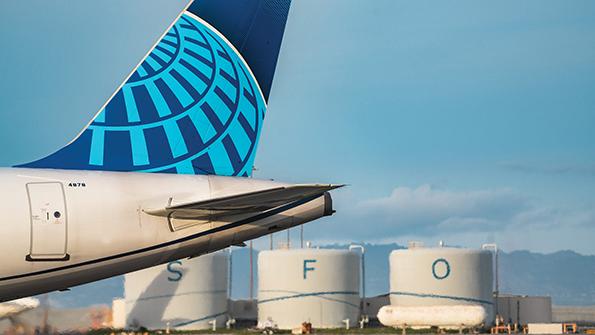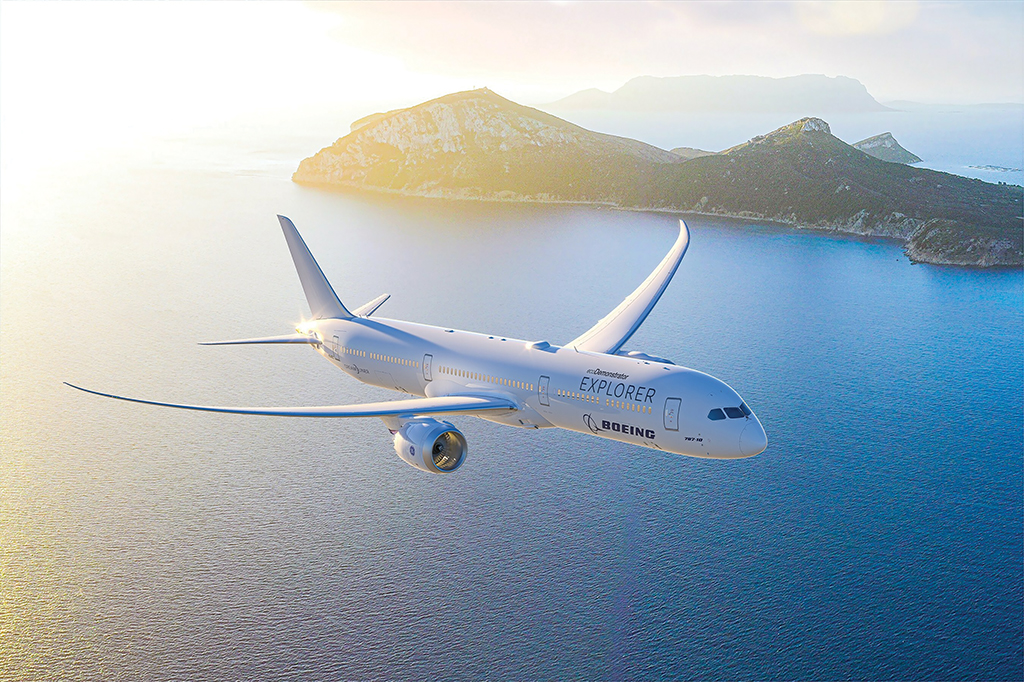
United Airlines is ramping up its use of SAF, and will begin using a SAF blend on departing flights from San Francisco International Airport.
Government incentives to produce sustainable aviation fuel (SAF) are proving to be the way to encourage the speedy construction of SAF production plants, IATA DG Willie Walsh said at the Sustainable Skies World Summit 2023 conference in Farnborough, UK.
He said the financial sector was still not fully convinced of the benefits in investing in SAF plants: “Nobody is going to invest unless they can see a credible path to making a return on it.” This requires government encouragement, and he urged national authorities to “get off the fence” in backing SAF production.
Also at the conference, UK chairman of the Sustainable Aviation Coalition Matt Gorman urged the UK to take swift action to accelerate moves toward a net-zero future to keep up with other countries, such as the US.
At least two-thirds of the UK’s SAF supplies could be produced domestically, he said, but this would require government assistance through the creation of appropriate policies or financial assistance.
A new UK research facility designed to dramatically accelerate the pace of aerospace technology development targeting zero-carbon aviation is being built. Backed by £58 million ($73 million) in funding, the new Whittle Laboratory at the University of Cambridge will co-locate researchers, students, companies and entrepreneurs alongside “make space” and manufacturing areas. The lab, which is expected to open in October 2025, will also incorporate the National Center for Propulsion and Power—a state-of-the-art test facility.
The European Parliament approved a revision of the region’s Emissions Trading Scheme for aviation, including SAF allowances as part of a wider vote on climate legislation. The April 18 vote was the latest step in efforts to put in place the European Commission’s “Fit for 55” legislation package, through which the European Union aims to cut greenhouse gas emissions by at least 55% compared to 1990 levels by 2030.
In the meantime, airlines and SAF producers are continuing to team up to increase SAF development.
Ireland-based ULCC Ryanair has a deal with global energy group Repsol to advance the supply of SAF for use at its airports across Spain and Portugal. This will give the airline access to up to 155,000 tons (52 million gal.) of SAF between 2025 and 2030—equivalent to more than 28,000 flights of roughly 150 minutes, which is predicted to save approximately 490,000 tons in CO2 emissions.
UK leisure carrier Jet2.com has invested in a new SAF production plant in northwest England, the Fulcrum NorthPoint facility. The deal will see Jet2—which encompasses airline Jet2.com and Jet2holidays—take an equity stake in the Fulcrum plant and receive more than 200 million liters (53 million gal.) of SAF over a 15-year period. SAF production is expected to start there in 2027.
In addition, Norwegian Air Shuttle has teamed with Norsk e-Fuel to build a SAF production plant, while Hungary-based Wizz Air is investing £5 million ($5.5 million) in biofuel company Firefly, which plans to make SAF from sewage.
Norwegian says the first full-scale e-fuel plant, located in Mosjøen in northern Norway, will produce SAF from as early as 2026.
The Wizz Air-Firefly partnership will allow the airline to supply SAF to its UK operations from 2028, up to 525,000 tons over 15 years. The agreement has the potential to save 1.5 million tons of CO2.
Two huge projects to produce billions of gallons of renewable transportation fuels have been announced in Brazil and Spain.
In Brazil, Acelen plans to invest more than 12 billion reals ($2.38 billion) over 10 years to modernize its Mataripe refinery in the state of Bahia to produce 1 billion liters (264 million gal.) of renewable fuel per year, including SAF. Production is expected to start in early 2026.
In Spain, energy company Cepsa formed a joint venture with Bio-Oils, owner of a refinery in Huelva, in the southern Spanish region of Andalusia, with plans to invest up to €1 billion ($1.1 billion) in the plant to produce 500,000 metric tons (165 million gal.) of SAF and renewable diesel per year. Production is planned to begin the first half of 2026.
In North America, Canada is getting a boost in SAF production as renewable fuels company Raven SR and Calgary, Alberta-headquartered Cap Clean Energy Corp. inked an agreement to co-develop biofuels facilities in Canada to produce SAF and renewable diesel for the heavy-duty transport sector. This partnership will allow Cap Clean to produce high-quality renewable fuels from various biomass and bio-waste feedstocks for the difficult-to-abate transportation sector using modular systems capable of rapid production scale-up.
Airbus Canada, Pratt & Whitney Canada and SAF+ Consortium (CADAQ-100) have a new initiative to collaborate on next-generation SAF, supported by the Quebec government. Key areas of collaboration include SAF research and testing, including flight testing blends of up to 100% SAF on an Airbus A220 powered by P&W GTF engines. The project will also comprise feasibility studies for establishing local production facilities for power-to-liquid e-SAF in Quebec.
Boeing is expanding its ecoDemonstrator program to include “Explorer” platforms that will focus on short-term testing of a specific technology. The first Boeing ecoDemonstrator Explorer, a Boeing 787-10, will participate in an operational efficiency exercise in June that includes flight tests in June from Seattle to Tokyo, Singapore and Bangkok to demonstrate how coordinating navigation across global airspace jurisdictions can improve operational efficiency, which can reduce an airplane’s fuel use and emissions by up to 10%.

India’s Vistara operated a Boeing 787 domestic flight between Indira Gandhi International Airport, Delhi (DEL) and Chhatrapati Shivaji Maharaj International Airport, Mumbai (BOM) on May 4 that was powered by a blend of SAF and traditional fuel—the first commercial service in India on a widebody aircraft.
In the US, United Airlines is ramping up its usage of SAF, saying it will begin using a SAF blend on departing flights from San Francisco International Airport (SFO) and is planning to use a SAF blend later this year at London Heathrow Airport (LHR), which could put United on track to use approximately 10 million gallons in 2023, nearly three times more than 2022 and close to 10 times more than 2019.
In Asia, Japan Airlines (JAL) will be the first airline to uptake blended SAF from Nagoya Chubu Centrair Airport (NGO), as part of the Japanese transport ministry’s demonstration project to blend SAF in-country. The Civil Aviation Bureau of the Ministry of Land, Infrastructure, Transport and Tourism procured 5,000 liters (1,300 gal.) of neat SAF from Neste, and blended at a Fuji Oil Company facility, before being sold by trading firm Itochu to JAL and All Nippon Airways (ANA).
